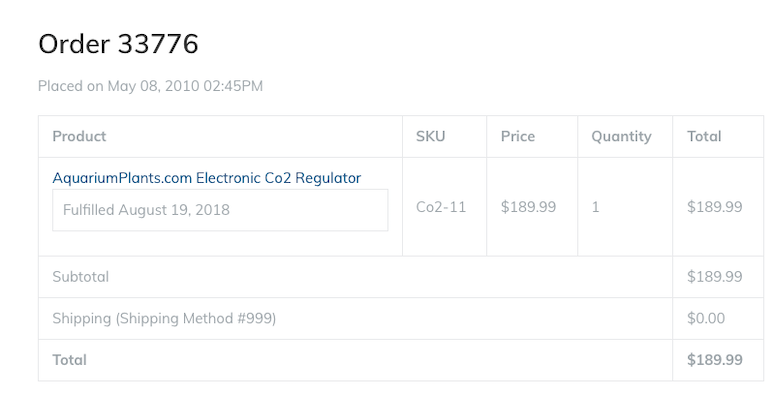ICP test results have arrived
For the past few years, several vendors have offered ICP testing. It's a process of blasting a water sample down to its ions and elements. Here's a quick description quoted from icp-analysis.com:
For the past few years, several vendors have offered ICP testing. It's a process of blasting a water sample down to its ions and elements. Here's a quick description quoted from icp-analysis.com:
The weather today is cold and wet, so I decided to break out the macro lens and take a few pictures today. First off, here's the new frag I picked up a few days ago, a Montipora digitata. I decided to part it in a section of dead skeleton for now where I knew nothing would touch it. I may have to move it so the Sebae doesn't tentacle it to death, but for now it looks great.
I discovered a missing line in my Apex code tonight. It's programming is coded to have it notify me via alarm, email and push notification if the tank gets too cold. That would be for my 400g. However, I never added an extra line of code for the separate frag system. Oops! Three years later, I find this out. Wow.
For fun, being curious about how many videos I'd uploaded to my youtube channel last year, and after checking analytics as well as metrics, these are some interesting statistics:
I've never been one to shy away from Lanthanum chloride, a product used in our hobby to bind up and export phosphate from a reef tank. Not only did I feel like I'd found the magic elixir the first time I used some, I've been a huge advocate for more than a decade. Two months ago at MACNA, Two Little Fishies introduced their version to the attendees named Phosban-L. Phosban has been a powdered version of GFO for a long time, used in a Phosban Reactor or similar device. Phosban-L is not just a liquid additive, it's a bottle of concentrated Lanthanum chloride.
BRS just uploaded all the MACNA presentations from this year's event in Las Vegas. Here's my presentation, which focuses on the decision-making process and the types of equipment you'll want to consider for that next build.
I've been running an AquariumPlants Carbon Doser on my calcium reactor since 2010. At the time I thought it was expensive, but I was tired of buying a new regulator annually. They were costing me about $100 a year in replacement gear, so this one seemed like a better choice since it came with a three year warranty, and apparently I got free shipping too.

Small reddish-rust colored creatures may already be in your tank. Or you may buy a coral and they'll appear as hitchhikers later. They may appear on the glass/acrylic, on the substrate, or on live rock. Due to their extremely thin bodies, they are called flatworms correctly. They appear almost two-dimensional, barely a flap of skin. They can move through the tank, elongating the front part of their body like a sail filling with wind, latch on to the nearby surface and pull the rest of its body forward.